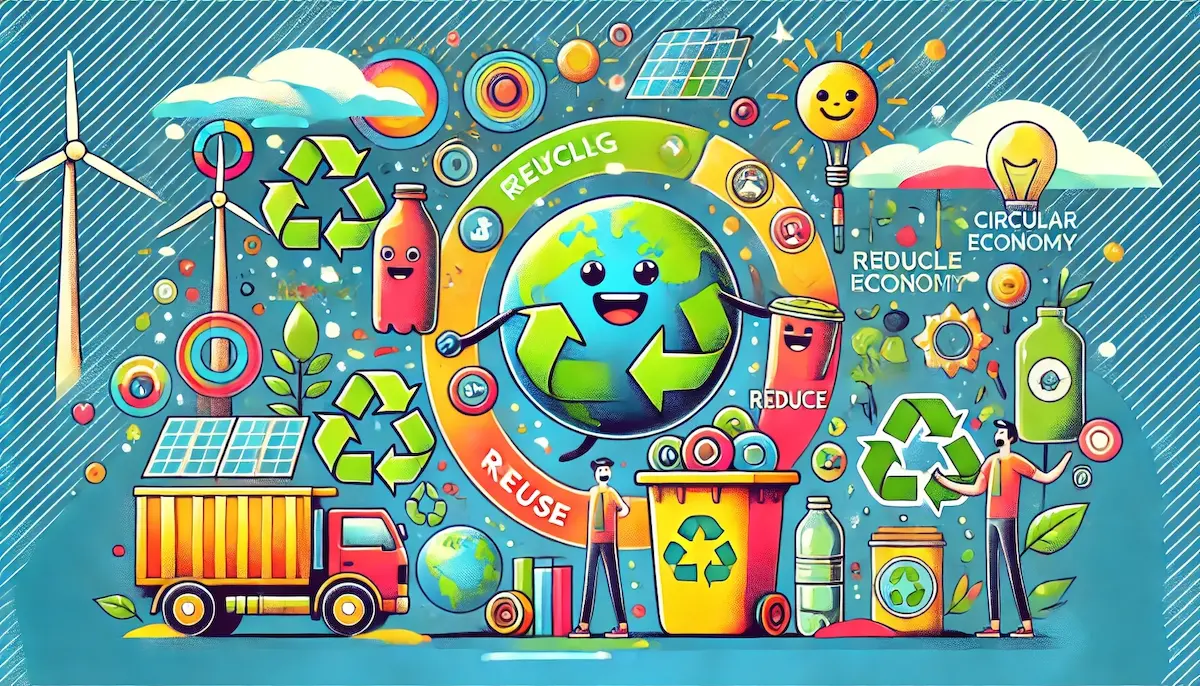The circular economy is an innovative economic model designed to minimize waste and make the most of resources. Unlike the traditional linear economy, which follows a ‘take-make-dispose’ pattern, the circular economy focuses on closing the loop, promoting sustainability through reuse, repair, refurbishing, and recycling.
What is a Circular Economy?
A circular economy aims to keep products, materials, and resources in use for as long as possible. It redefines growth, emphasizing positive society-wide benefits. The goal is to decouple economic activity from the consumption of finite resources, creating a system that is restorative and regenerative by design.
Principles of Circular Economy
The circular economy is based on three fundamental principles:
- Design Out Waste and Pollution: Products and processes are designed to eliminate waste and pollution. This involves using materials that can be easily recycled and designing products for longevity, repairability, and upgradability.
- Keep Products and Materials in Use: This principle focuses on maintaining the value of products, materials, and resources for as long as possible through reuse, repair, remanufacturing, and recycling. Sharing and leasing models also help extend the life of products.
- Regenerate Natural Systems: The circular economy aims to enhance natural systems rather than depleting them. This involves returning valuable nutrients to the soil and other ecosystems, promoting biodiversity, and using renewable energy sources.
Benefits of a Circular Economy
Environmental Benefits
- Reduced Waste: By designing products for longevity and recyclability, the circular economy significantly reduces the amount of waste sent to landfills and incinerators.
- Lower Resource Consumption: Circular practices reduce the need for extracting and processing raw materials, conserving natural resources and reducing environmental degradation.
- Decreased Pollution: Emphasizing clean production methods and materials that are non-toxic helps reduce pollution in air, water, and soil.
Economic Benefits
- Cost Savings: Businesses can save money by using resources more efficiently and reducing waste. Consumers can also benefit from longer-lasting products and lower costs associated with sharing and leasing.
- Job Creation: The circular economy can create jobs in areas such as recycling, repair, remanufacturing, and product innovation.
- Resilience: A circular economy enhances economic resilience by reducing dependence on finite resources and fostering local production and resource loops.
Social Benefits
- Enhanced Quality of Life: Access to high-quality, long-lasting products can improve consumers’ quality of life. Sharing and leasing models can make goods more accessible and affordable.
- Community Engagement: The circular economy fosters community engagement through initiatives like local repair cafes, recycling programs, and community-supported agriculture.
Examples of Circular Economy Practices
- Product as a Service: Instead of selling products, companies provide them as services. For example, a company might lease appliances or electronics, ensuring they are returned, refurbished, and reused.
- Reverse Logistics: Businesses implement systems to take back products at the end of their life cycle for recycling or refurbishing.
- Industrial Symbiosis: Different industries collaborate to use each other’s by-products, reducing waste and improving resource efficiency.
Challenges and Implementation
Challenges
- Transition Costs: Shifting to a circular economy requires upfront investment in new technologies, infrastructure, and business models.
- Consumer Behavior: Changing consumer habits to embrace reuse, repair, and recycling can be challenging.
- Policy and Regulation: Governments need to create policies and regulations that support circular practices and incentivize businesses to adopt them.
Implementation
- Design Innovation: Encouraging designers and manufacturers to create products with circular principles in mind.
- Education and Awareness: Raising awareness about the benefits of a circular economy and educating consumers and businesses on how to participate.
- Collaborative Efforts: Governments, businesses, and communities must work together to create a supportive environment for the circular economy.
Conclusion
The circular economy represents a transformative approach to sustainable development, offering a pathway to a more resilient, resource-efficient, and environmentally friendly future. By rethinking how we design, use, and dispose of products, we can create a system that benefits businesses, consumers, and the planet.
Blockfine thanks you for reading and hopes you found this article helpful.
